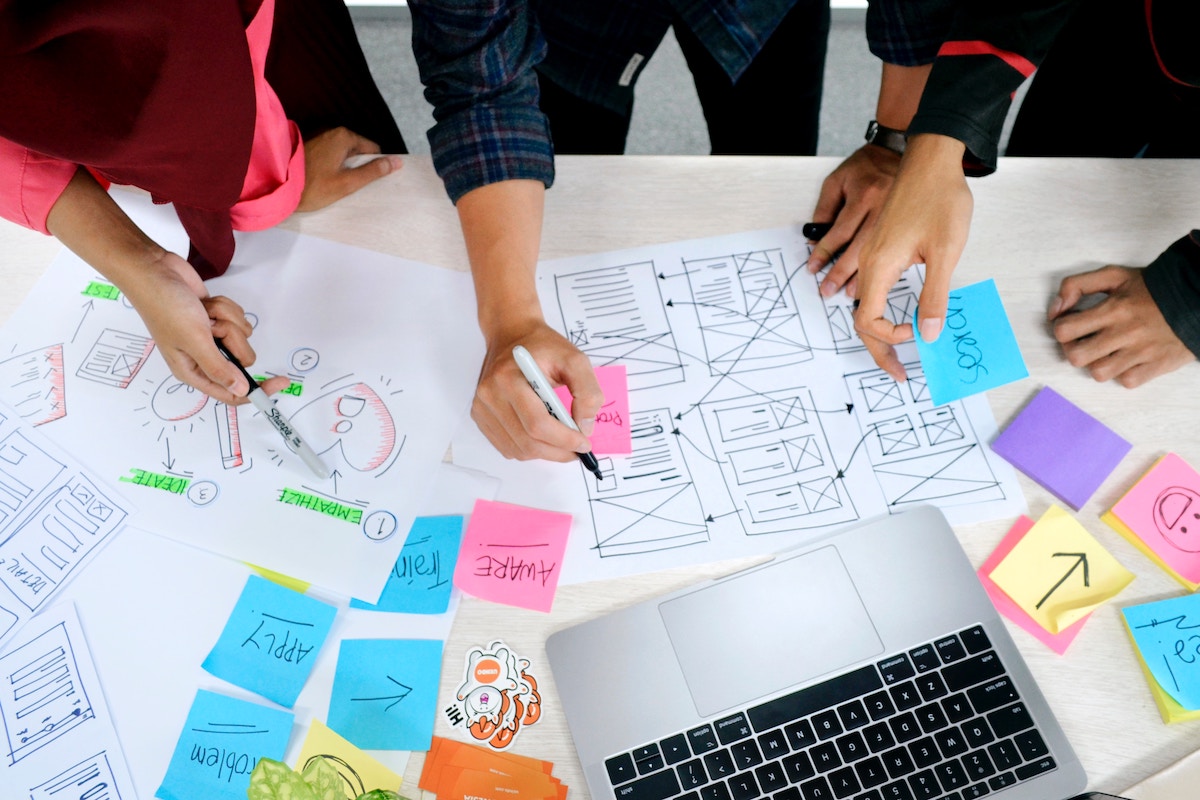The 5 awkward phases of design thinking facilitation

An attempt to use design thinking could be likened to experiencing the peak of your professional imposter syndrome. I mean surely, somebody will eventually figure out that you have no idea what the final outcome will be of the session. All you have is some butchers’ paper, post-it notes, the people sitting in the room and a hope that the session won’t fall completely off the rails.
The reality is, using design thinking (rather than just reading about it) is messy and awkward. In fact, it can be a huge risk; but it pays to work through the initial awkward mess and focus on clear intended outcomes rather than worrying about the reactions of participants.
The hardest part of the process is usually convincing the team to congregate for 1 hour during the week to discuss how they might ‘align priorities’ and ‘build a roadmap going forward’ — of course, with the intention of using design thinking methods. On my most recent project, I knew the client would not immediately be receptive of a “design thinking session” where “everybody gets to write on post-it-notes”. I could only imagine the reaction would be disappointing and awkward at the very least.
Undoubtedly, it was going to take a lot more than just the promise of a colourful room filled with post-it notes and ‘innovative ideas’ to convince the client to participate in a design thinking session.
To help you relate or empathise, I’ve illustrated the key 5 awkward phases that goes through the mind of a ‘facilitator’ planning to run a design thinking session.
STAGE 1: THE REALISATION
You’re at a critical point of the project. You’ve found the ideal moment where you know the team could benefit from brainstorming their ideas, understanding the problem and context, or gathering feedback to come to a shared understanding. I like to think of this as the problem or ‘tension’ for which Design Thinking methods can be incredibly useful.
STAGE 2: THE ‘DREADED ASK’
Now you need to muster up the courage to tell the client that you’re intending to gather everyone in a room to try some ‘methods’…
STAGE 3: THE ‘WHAT WAS I THINKING’ MOMENT
You’ve sent the meeting invite to the team with a standard agenda which no makes no reference to Design Thinking. Nobody knows that you’re frantically sifting through 10–15 Design Thinking methods to construct the best recipe for the session to achieve its outcomes. You suddenly hate yourself for organising the session in the first place and end up drafting back-up slides in case it fails. You start to have dreams of the client team giving you disgusted looks when you explain to them “you can only write one idea per post-it-note with a black sharpie”.
STAGE 4: THE COMPROMISE
You think you’ve found the perfect recipe at least twice. But of course, you’re bound to wake up in the middle of the night and realise the recipe is shit, scrapping the recipe and starting again. The session is tomorrow so you settle for some ‘safe’ options — you think to yourself, a bit of rose-thorn-bud and affinity mapping is not overly time-consuming and not outrageously ‘creative’, so you decide that’s the bare minimum you’ll do. Of course, you know there’s a lot of other great tools you’ll have up your sleeve which you plan to use spontaneously if the session goes relatively smoothly. Although at this stage, you’ll be happy if the client doesn’t fire you on the spot.
STAGE 5: THE AWKWARD INTRODUCTION
You’ve finally made it to the session and you’re excited. You truly believe the tools you’ve prepared will help the team understand the situation better and come to a shared sense of clarity for an approach going forward. Only thing, the team is visibly confused when they come in with their laptops and notepads to a room full of post-notes and sharpies. Deep breath. You tell them what you’ll plan to do today, doing your best to ignore mixed their expressions of excitement, boredom…and of course, a heavy air of awkwardness and scepticism.
So now we’ve established the REAL emotional journey of design thinking in its 5 phases, here are my few simple tips on helping to overcome the inherent awkwardness of it all.
- Have a clear intention and vision of the outcome: Understand what stage of the project you’re in and what outcome is desired. Then find the methods which will help to achieve the outcome and communicate this intent to the participants.
- Know your methods, and practice it alone or with colleagues: Do the training, speak to experts, watch videos and tutorials.
- Avoid using the word ‘Design’ or ‘Design Thinking’: Unless the client reads the Harvard Business Review or Forbes, its generally a fairly vague buzz word which a lot of people don’t really respect. People who believe in it respect it, but unfortunately, you can’t assume everybody trusts the idea of design thinking. Best to avoid freaking people out.
- Have faith in the methods: If you doubt the methods, so will the client or the audience that is participating in the session. Be enthusiastic and engage everyone in the room so they all feel included in the process.

